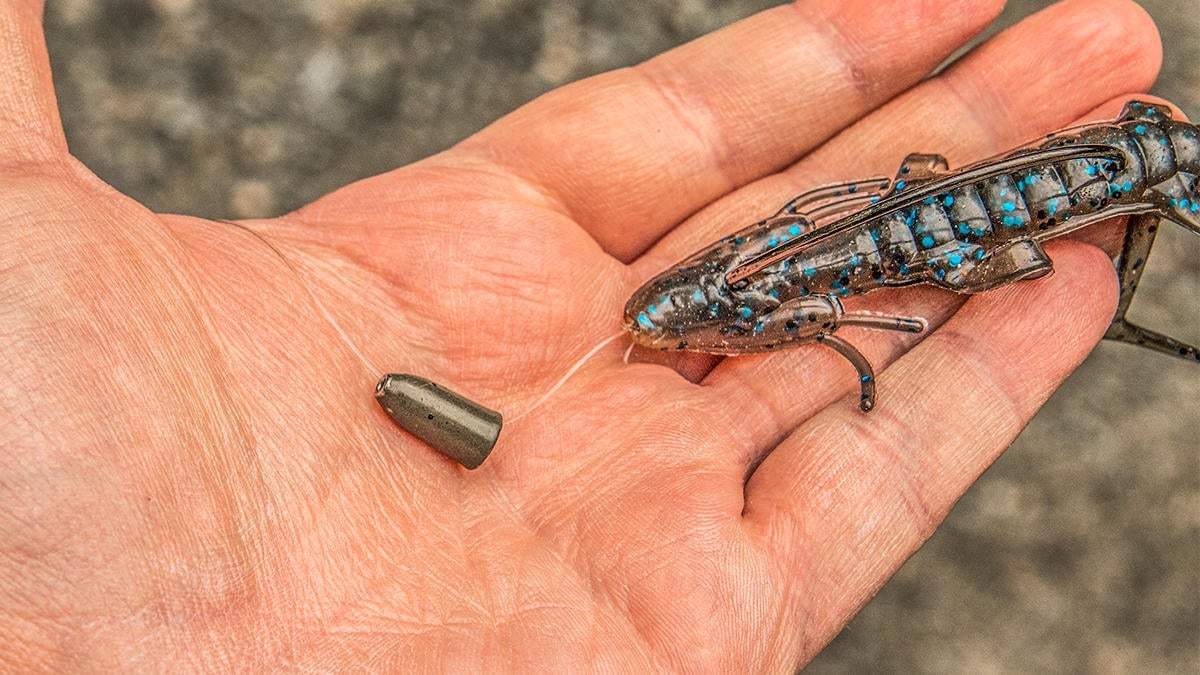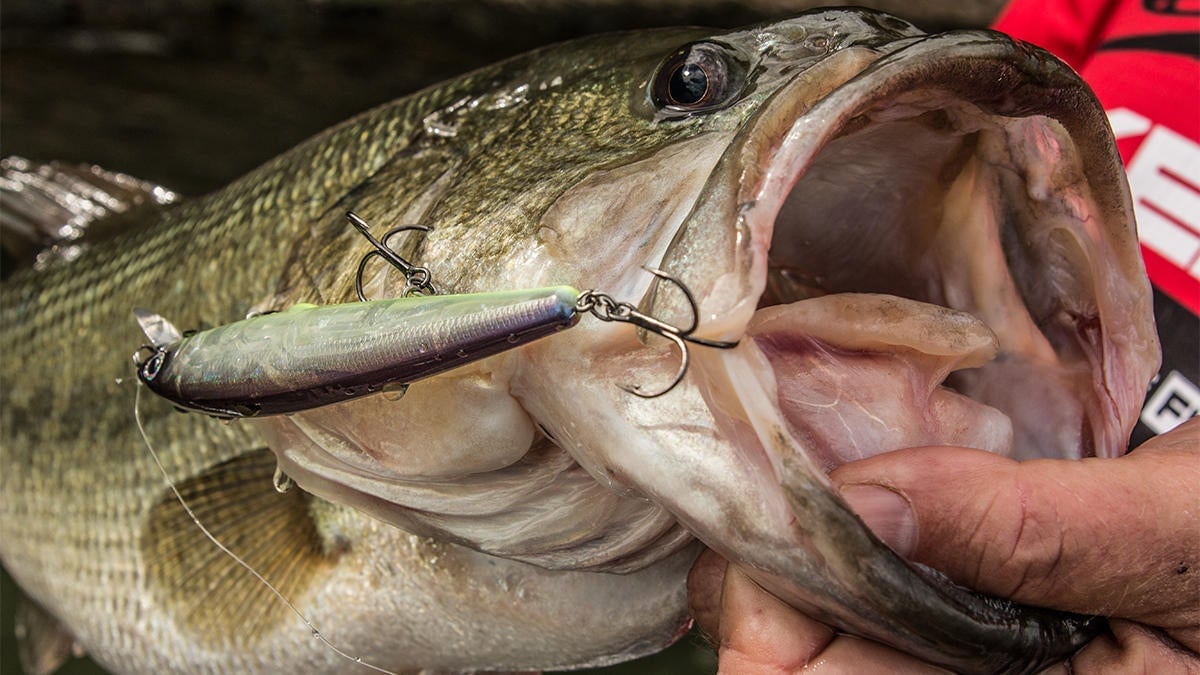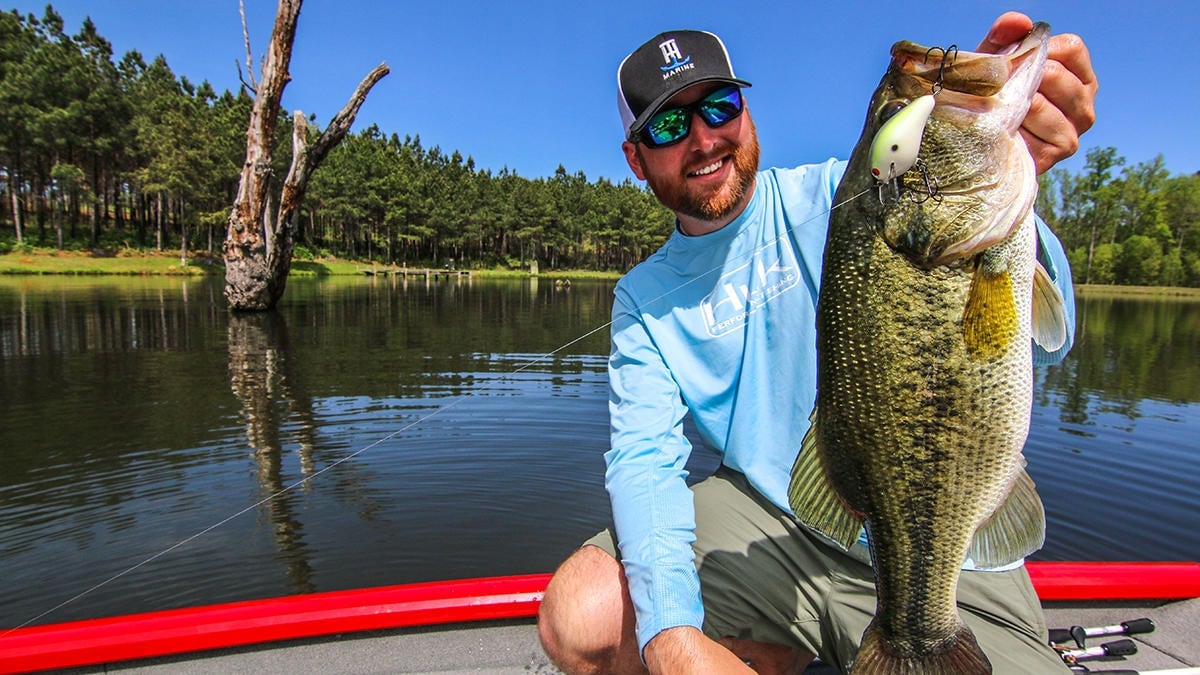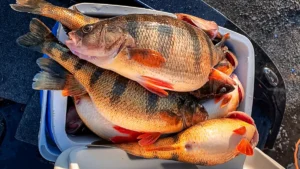It seems to happen around this time every year. Just when you think it’s finally warming up for good, Mother Nature pulls a 180 and kicks you, and your fishing patterns, right in the teeth. What was working yesterday all of the sudden won’t even produce a single bite and you’re right back at square one.
These spring cold fronts can quickly change the way you need to be fishing. I’ve been battling several of them lately and I’ll be honest – they’re about to drive me up the wall. One day I’ll catch 50 bass and the next day, after the water temperature drops four degrees over night, I can’t buy a bite for hours.
But the good news about these cold fronts is that they’ve given me an opportunity to dig in and truly experiment in tough conditions. I sat down last night and made a list of everything I’ve been doing to keep catching bass in all of this unpredictable weather. I thought I’d share it with everyone. Fishing is a humbling sport and sometimes the slightest adjustment can produce the biggest results.

Ditch the weight peg
Cold fronts bring high barometric pressure into areas, which is notorious for making bass finicky and much tougher to catch. You can put a bait right on their nose at times and they won’t even think of biting. But I’ve figured out lately that I’ve gotten a lot more Texas rig bites in cold-front conditions when I haven’t pegged my weight.
Most shallow-water guys peg their Texas rig weights, including myself, so this can feel pretty awkward at first. But if you think about what an unpegged Texas rig does underwater, it creates a incredibly natural, gliding action as it falls. Your tungsten weight is going to hit the bottom first as it slides up your line. This allows your soft plastic to slowly glide to the bottom as it catches up with your weight.
The slower and more deliberate fall gives these slow-moving bass extra time to detect and bite your Texas rig. In these conditions, bass don’t necessarily want something fast-moving and obnoxious. The more natural you can get your presentation, the better off you can be.

Back off
This time of year is not only volatile due to the weather, but also because of the shad spawn in much of the country. These big bass will gorge themselves on spawning shad all night and for the first hour or so of daylight. But once that sun gets over the trees, they’re done. They’re full as a tick and have no reason to actively feed for the rest of the day. This is why they can nearly vacate the shallows for most of the day; they’re simply not hunting.
This concept, although fairly simple, finally clicked for me a few weeks ago. I could fish miles of bank with very few bites. But when I started scanning around on my Garmin Panoptix LiveScope unit, I noticed several bass sitting off the first depth change from the bank. I was targeting 3 to 6 feet of water and the bass were actually behind me in 10 feet of water. They had ate their fill during the morning shad spawn and just slid out to deeper water to hang out for the rest of the day.
I chose to cast something very small and subtle to ’em, so I rigged up a small grub on a spinning rod with 8-pound test line. Sure enough, I caught three of the four bass I saw on my LiveScope. For the rest of the afternoon, I made a conscious effort to target that first depth change off the bank and I turned a poor day of fishing into a surprisingly productive one.

Throw that jerkbait
I’ll be the first to admit that I’m not a huge fan of jerkbait fishing. I throw a jerkbait more than you’d think, however, because the dang thing just gets bites. If you held a gun to my head and told me to go catch a bass right this second, a jerkbait would be the first thing I’d throw. They’re like bass candy.
Once a spring cold front rolls through, in addition to the high barometric pressure, you’re also left with high winds. It’s been so bad here lately that I’ve had to leave the big water a few times and head up rivers to get away from the huge swells.
You can use this wind to your advantage, though. It will position both baitfish and bass on windblown points and seawalls throughout the lake and there is no better lure for windy conditions than a jerkbait. The waves and ripples created by the wind distort the profile of the jerkbait just enough to hide any unnatural characteristics such as hooks and split rings, which makes it much easier to fool bass.
Even if you’re not crazy about jerkbaits, try it during the next cold front. I’ve had nasty days lately when I’ve caught upwards of 30 bass in just a few hours. Is it because I’m that good? Heck no. Absolutely not. It’s because a jerkbait flat-out catches ’em during cold fronts.

Beat it up
I wish I had some elaborate biological explanation for this point, but sadly I don’t. But this has been a big deal for me throughout these spring weather fronts. Do not be afraid to hit a productive spot several times during the day. When I run across a good stretch where I can get a few bites, I’ll come back every hour or so and beat the fire out of it. Fish are moving constantly right now, so I don’t try to “save” fish for the next day or the next tournament. I milk everything for every ounce it’s worth because chances are, those fish won’t stay there long.
There is a reason those fish are there. Whether it’s the presence of bait, bottom composition or vegetation, it all depends. But again, they’re there for a reason and in cold front conditions, their feeding windows get incredibly small. So revisiting a productive spot several times increases the likelihood of you pulling up while they happen to be feeding. Or at least that’s my opinion.
So try these tips on your next trip. If you run across a little scrape of ’em, come back in an hour or two. Don’t peg your weight. Throw a jerkbait. Back off the bank a little bit. I’m willing to bet if you try these things out, you won’t be so hesitant to go fishing during that next cold front.


![[VIDEO] Greg Hackney’s Formula for Post-Spawn Bass Success](https://www.wired2fish.com/wp-content/uploads/2025/05/Hackney_Post-Spawn_Bass-300x169.webp)
![[VIDEO] Scanlon’s Guide for Stained Water Spawning Bass](https://www.wired2fish.com/wp-content/uploads/2025/05/scanlon-jig-300x169.webp)
![[VIDEO] Seth Feider’s Prespawn Jig Pattern Explained](https://www.wired2fish.com/wp-content/uploads/2025/04/prespawn-jig-300x169.webp)









